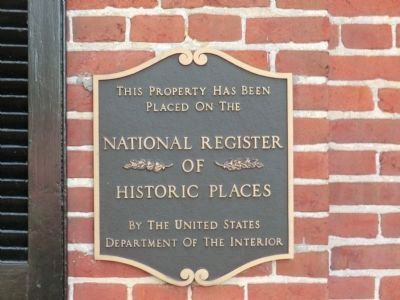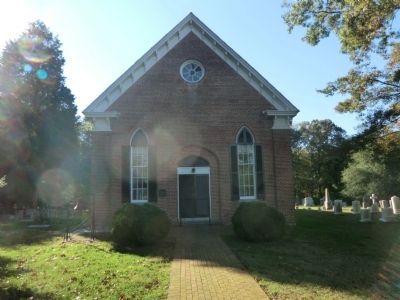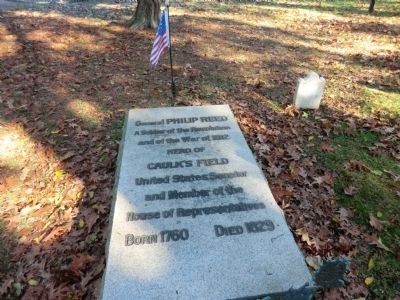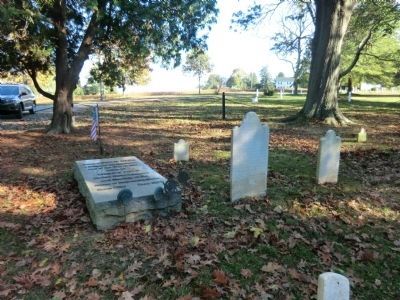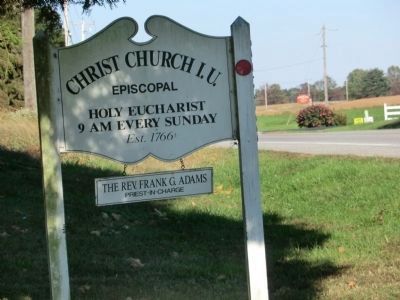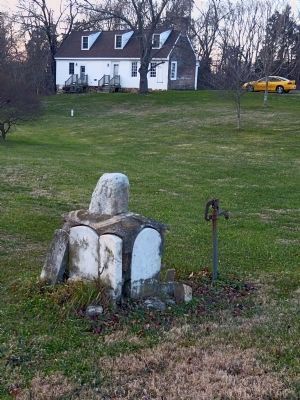Worton in Kent County, Maryland — The American Northeast (Mid-Atlantic)
Christ Episcopal IU Church and Cemetery
National Register of Historical Places
— General Philip Reed Burial Place —
Inscription.
This property has been placed on the National Register of Historic Places by the United States Department of the Interior
Topics. This memorial is listed in these topic lists: Cemeteries & Burial Sites • Churches & Religion • War of 1812.
Location. 39° 17.448′ N, 76° 5.514′ W. Marker is in Worton, Maryland, in Kent County. Memorial is on Lambs Meadow Road (Maryland Route 298). Touch for map. Marker is in this post office area: Worton MD 21678, United States of America. Touch for directions.
Other nearby markers. At least 8 other markers are within 6 miles of this marker, measured as the crow flies. Taking Command (within shouting distance of this marker); African American Schoolhouse (approx. 3 miles away); Maryland’s First Women Voters (approx. 3.6 miles away); Colonel Isaac Perkins (approx. 3.6 miles away); American Mettle (approx. 4.2 miles away); Senator George Vickers (approx. 5 miles away); George Washington (approx. 5.2 miles away); a different marker also named George Washington (approx. 5.3 miles away). Touch for a list and map of all markers in Worton.
Also see . . . Christ Church, Graveyard and Sexton's House. Maryland Historical Trust website entry (Submitted on March 3, 2022, by Larry Gertner of New York, New York.)
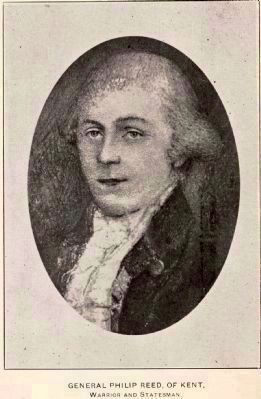
Photographed By Denroche, et. al.
6. General Philip Reed, of Kent.
Warrior and Statesman
Warrior and Statesman
U.S. Senator Philip Reed served in the Revolution and the War of 1812. He won the battle of Caulk's Field in 1814 as a Lieutenant Colonel and was promoted General soon afterward. When the granite slab marking his grave was placed in 1902, the grave had been unmarked for 70 years. From Denroche, et al. 1902
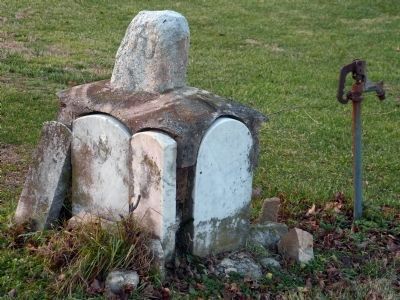
Photographed By Allen C. Browne, December 28, 2012
7. The I U Stone
The 1978 National Register Nomination Form says that "the name Christ Church I.U. is derived from a stone with those initials found in the church yard; their origin is unknown." The more recent Church History says that "IU stands for Isaac Usilton, who gave both the land and the money to build the original sanctuary. It’s been Christ Church IU (IU to those of us who love it) since the first church was built in mid-1700’s."
Credits. This page was last revised on March 3, 2022. It was originally submitted on October 30, 2013, by Don Morfe of Baltimore, Maryland. This page has been viewed 696 times since then and 25 times this year. Photos: 1, 2, 3, 4, 5. submitted on October 30, 2013, by Don Morfe of Baltimore, Maryland. 6, 7. submitted on November 1, 2013, by Allen C. Browne of Silver Spring, Maryland. 8. submitted on November 2, 2013, by Allen C. Browne of Silver Spring, Maryland. • Bill Pfingsten was the editor who published this page.
